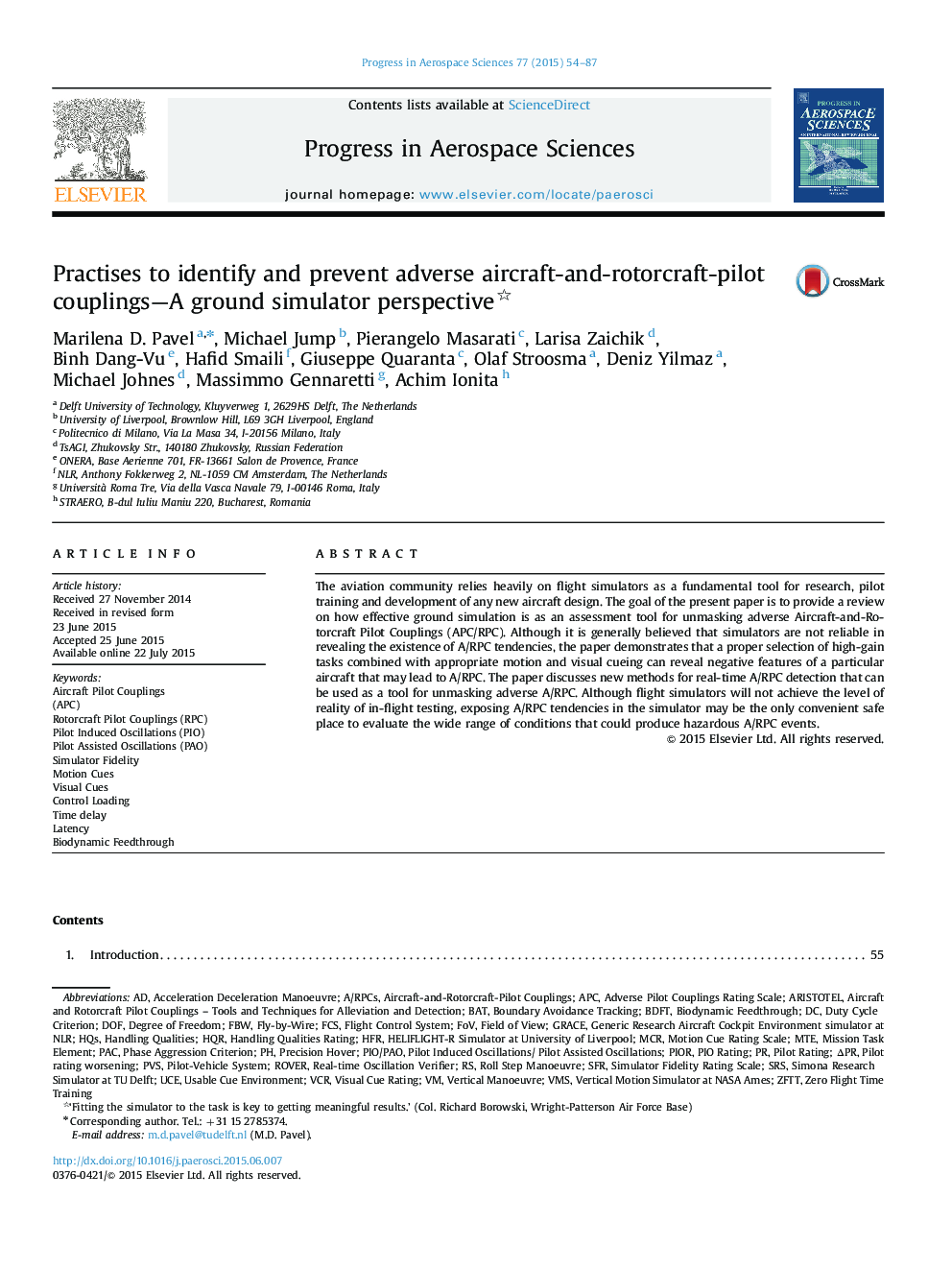| Article ID | Journal | Published Year | Pages | File Type |
|---|---|---|---|---|
| 1719206 | Progress in Aerospace Sciences | 2015 | 34 Pages |
Abstract
The aviation community relies heavily on flight simulators as a fundamental tool for research, pilot training and development of any new aircraft design. The goal of the present paper is to provide a review on how effective ground simulation is as an assessment tool for unmasking adverse Aircraft-and-Rotorcraft Pilot Couplings (APC/RPC). Although it is generally believed that simulators are not reliable in revealing the existence of A/RPC tendencies, the paper demonstrates that a proper selection of high-gain tasks combined with appropriate motion and visual cueing can reveal negative features of a particular aircraft that may lead to A/RPC. The paper discusses new methods for real-time A/RPC detection that can be used as a tool for unmasking adverse A/RPC. Although flight simulators will not achieve the level of reality of in-flight testing, exposing A/RPC tendencies in the simulator may be the only convenient safe place to evaluate the wide range of conditions that could produce hazardous A/RPC events.
Keywords
Related Topics
Physical Sciences and Engineering
Engineering
Aerospace Engineering
Authors
Marilena D. Pavel, Michael Jump, Pierangelo Masarati, Larisa Zaichik, Binh Dang-Vu, Hafid Smaili, Giuseppe Quaranta, Olaf Stroosma, Deniz Yilmaz, Michael Johnes, Massimmo Gennaretti, Achim Ionita,
